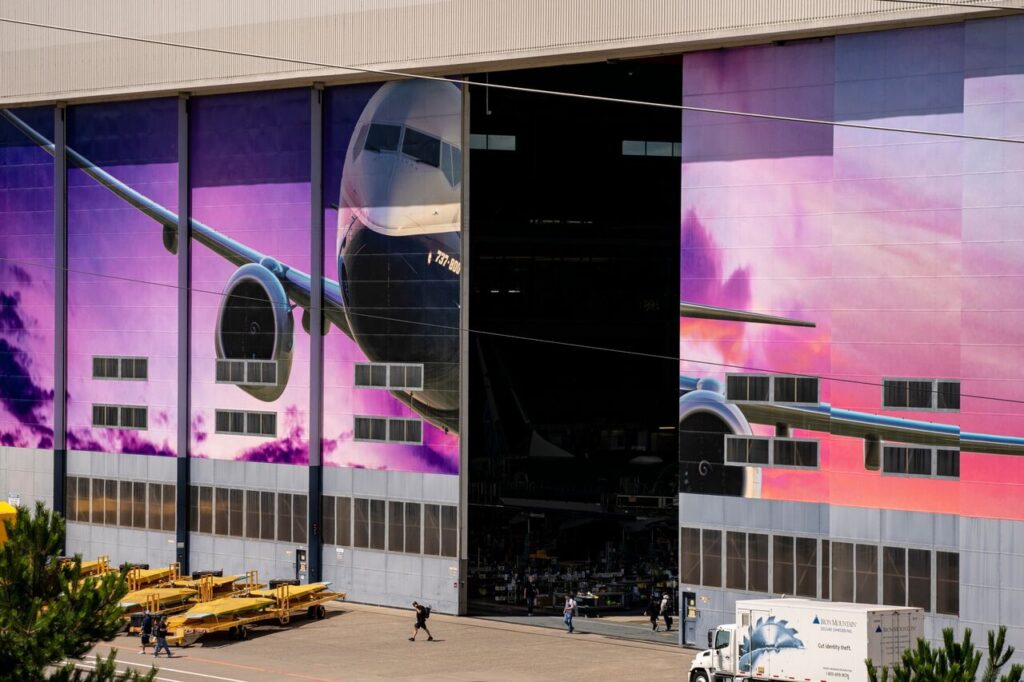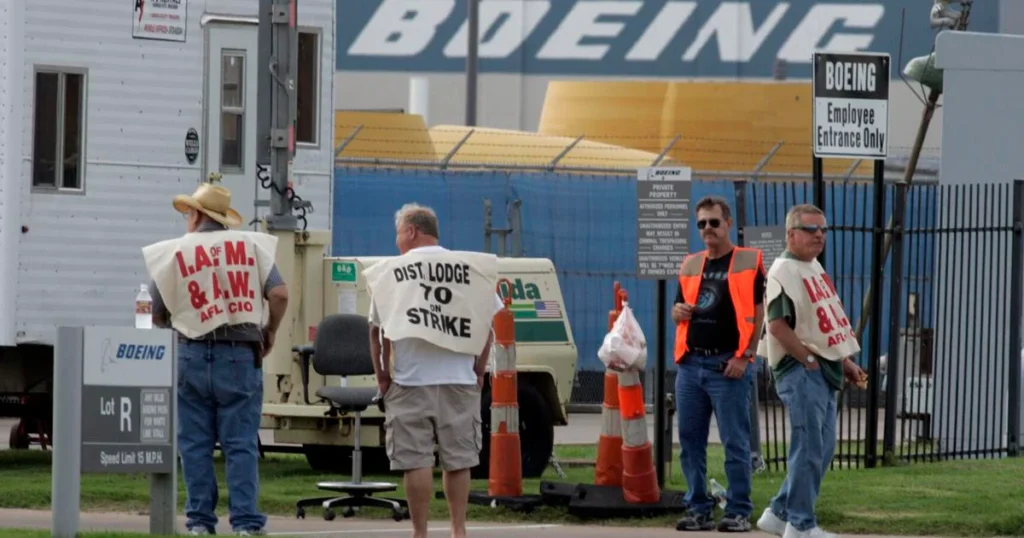Boeing Faces Labor Rift as Workers Seek 40% Pay Raise
In the wake of recent manufacturing mishaps and a near-disaster involving a 737 Max aircraft, Boeing Co. confronts a brewing labor dispute that has been brewing for a decade.
The International Association of Machinists and Aerospace Workers, Boeing’s largest union, remains discontented over a 2014 agreement that curtailed pensions, kept raises minimal, and restricted activism for ten years. Union leaders are now pushing for a substantial 40% wage hike over three to four years, buoyed by a resurgence in the US labor movement, a shortage of skilled aerospace labor, and pressure on Boeing to stabilize its factory operations.
Jon Holden, president of IAM District 751 representing 32,000 Seattle-area Boeing mechanics, emphasized the union’s willingness to strike if necessary, although they prefer reaching an acceptable agreement through negotiations.
Holden sees potential for a mutually beneficial deal with Boeing, drawing inspiration from successful strikes by auto workers in Detroit, writers and actors in Hollywood, and machinists at Boeing supplier Spirit AeroSystems Holdings Inc. Each of these groups secured significant improvements in pay and contract terms after walkouts last year.
A potential strike could halt operations at Boeing plants in Washington and Oregon, including assembly lines for the lucrative 737 jets, impacting production once the current IAM contract expires in September.
As talks are scheduled to commence on March 8, labor tensions add to the challenges facing Boeing CEO Dave Calhoun. He already faces inquiries from legislators and shareholders over a series of manufacturing issues, including the recent problem with misdrilled holes by Spirit. The Federal Aviation Administration has heightened oversight and capped 737 production until quality standards improve.
Boeing remains committed to collaborating with its teams to enhance quality across its operations while striving for a new contract that addresses the concerns of its workforce, the company stated.
The negotiations are shaped by the labor tactics employed by Boeing ten years ago, when the company wielded leverage over its Seattle-area workers during discussions on pension freezes and modest pay raises. The aftermath of those negotiations still resonates among the workforce, fostering a sense of discontent and a desire for better terms.
With Boeing’s shares declining 20% this year amid manufacturing scrutiny, the company lacks the leverage it once had. Unemployment rates are low, and the threat of moving production elsewhere holds less sway. Analysts suggest the union holds a strong bargaining position and could secure favorable terms in the current climate.

Dave Calhoun on Capitol Hill in Washington, DC, on Jan. 24.Photographer: Samuel Corum/Bloomberg
Boeing refrained from providing a financial forecast for this year, although it maintained its target of achieving $10 billion in free cash flow by 2025 or 2026, a goal threatened by a potential extended work stoppage.
A labor agreement could prove costly. According to Sheila Kahyaoglu, an analyst at Jefferies, every 10% rise in machinist wages could diminish free cash flow by approximately $260 million by 2026, before considering price adjustments and productivity gains.
Further complicating matters, US regulators are intensifying scrutiny of Boeing’s quality protocols following the structural incident on Alaska Airlines Flight 1282 on January 5. The National Transportation Safety Board preliminarily determined that the aircraft’s door panel was missing four critical bolts.
Additionally, Boeing’s suppliers, currently convened in the Seattle area, must assess the risks associated with escalating production.
The machinists aim to leverage their bargaining power for more than just economic concessions. Jon Holden advocates for Boeing to reinstate thousands of quality checks suspended in the last decade and commit to manufacturing aircraft in Seattle for the long term.
Boeing asserts that it has reinstated inspections and increased the number of quality inspectors in its commercial division by 20% since 2019.
The union also seeks the revival of defined-benefit pensions, reduced out-of-pocket healthcare expenses, and greater flexibility regarding overtime. Holden mentioned that the IAM local is examining the tactics employed by the United Auto Workers last year, including selective strikes at specific locations.
Holden emphasized, “We need jobs for 50 years, not just four years.”

Workers at Boeing’s manufacturing facility in Renton last year.Photographer: David Ryder/Bloomberg
The connection between Boeing’s labor challenges and the quality deficiencies that triggered scrutiny from US regulators and airline clients, sending auditors into the company’s factories after the Alaska Airlines incident, is significant, according to Cliff Collier, a consultant with extensive experience in aerospace manufacturing.
Collier attributes Boeing’s recent difficulties to turnover, noting an influx of inexperienced workers and managers since the pandemic, along with labor strategies that contributed to the departure of seasoned staff earlier on.
“People don’t become less capable,” Collier remarked. “They become overburdened, they are pressured to undertake tasks that may be beyond their expertise.”

